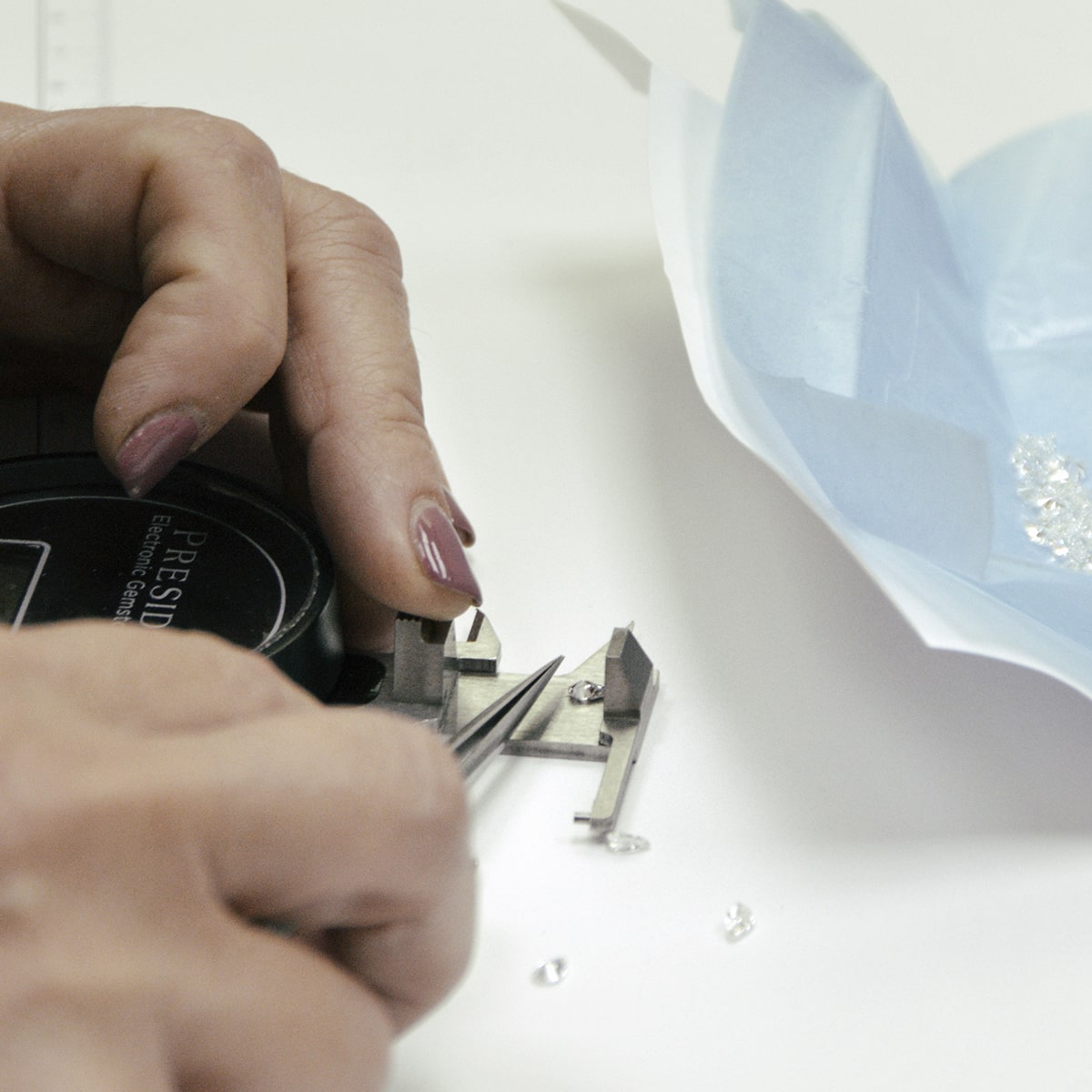
Mercato dei diamanti, il grido di allarme de Il Sole 24 Ore
Mercato dei diamanti, Il Sole 24 Ore lancia un grido di allarme. In un articolo pubblicato ieri dal quotidiano di Confindustria a firma Sissi Bellomo, è stato evidenziato come il mercato della più preziosa delle gemme stia vivendo un momento di crisi ma soprattutto di cambiamenti strutturali. Prezzi scesi di circa un quinto dai massimi di febbraio 2022 e una concorrenza sempre più agguerrita delle gemme sintetiche alla base dello scenario mondiale. Non per niente già dal 2018 De Beers è presente nel mercato dei lab grow diamonds con la sua società Light Box, la novità di questi giorni è la drastica svolta commerciale: proporre sul mercato americano anelli di finanziamento con pietre sintetiche.

Ma, quello che fa tremare di più i polsi degli operatori del settore è il balzo in avanti che ha avuto negli ultimi anni il mercato dei sintetici passando dal 2,3 per cento del 2020 a quasi il 10% di questi giorni. Secondo sempre quanto riporta il Sole 24 ore: “a gennaio 2020 erano sintetici l’11,2% dei diamanti venduti sciolti, lo scorso febbraio la quota aveva raggiunto il 46,6%: in appena tre anni siamo saliti da un decimo delle vendite a quasi metà. Nelle vendite di diamanti naturali grezzi intanto De Beers colleziona una delusione dopo l’altra. La società ha preferito rinviare l’appuntamento di maggio con i “sightsholders”, e mercoledì – quando si è finalmente tenuto il quinto “ciclo” di vendite di quest’anno – il ricavo è stato di 450 milioni di dollari, in calo del 32% rispetto allo stesso periodo del 2022 e del 6% rispetto alla vendita precedente”.
In controtendenza la notizia che viene dal Botswana dove la De Beers ha rinnovato l’accordo per la commercializzazione dei diamanti estratti nel paese africano dopo che le trattative con il governo del presidente Mokgweetsi Masisi si erano arenate. In un comunicato congiunto, le due parti hanno dichiarato che il nuovo patto riflette le aspirazioni della popolazione del Botswana, spinge sia il Botswana che De Beers a progredire e sostiene il futuro della loro joint venture “Debswana” attraverso investimenti a lungo termine. L’accordo darà alla nazione dell’Africa meridionale il 30% della produzione di diamanti da vendere attraverso la Okavango Diamond Company, di proprietà statale, che salirà al 50% entro l’ultimo anno del contratto, ha dichiarato De Beers. Il governo di Masisi aveva comunicato nei mesi scorsi di essere pronto a ritirarsi se non avesse ricevuto una quota di produzione migliore nelle trattative con De Beers, che è di proprietà del 15 percento del Botswana.
L’anno scorso De Beers si è affidata al Paese per circa il 70% della sua fornitura di diamanti grezzi, pari a 24 milioni di carati. In cambio, l’estrazione dei diamanti contribuisce a un terzo del prodotto interno lordo della nazione senza sbocco sul mare e ha favorito la sua ascesa fino a diventare la sesta nazione più ricca dell’Africa per numero di abitanti. Solo la Russia produce più pietre preziose.
Diamond market, the cry of alarm from Il Sole 24 Ore
Bucking the trend is news from Botswana where De Beers has renewed its agreement to market diamonds mined in the African country after negotiations with President Mokgweetsi Masisi’s government had stalled. In a joint statement, the two sides said the new pact reflects the aspirations of the people of Botswana, pushes both Botswana and De Beers forward, and supports the future of their “Debswana” joint venture through long-term investments. The agreement will give the southern African nation 30 percent of diamond production to sell through the state-owned Okavango Diamond Company, rising to 50 percent by the final year of the contract, De Beers said. The Masisi government had indicated in recent months that it was ready to pull out if it did not receive a better production share in negotiations with De Beers, which is 15 percent owned by Botswana.
Last year De Beers relied on the country for about 70 percent of its 24 million carat supply of rough diamonds. In return, diamond mining contributes one-third of the landlocked nation’s gross domestic product and has aided its rise to become Africa’s sixth richest nation by population. Only Russia produces more precious stones.
But, what makes industry players shake their wrists the most is the leap forward the synthetic market has had in recent years, going from 2.3 percent in 2020 to nearly 10 percent these days. According again to what the 24-hour Sun reports, “in January 2020, 11.2 percent of diamonds sold loose were synthetics; by last February, the share had reached 46.6 percent: in just three years we have risen from one-tenth of sales to almost half. In natural rough diamond sales, meanwhile, De Beers is collecting one disappointment after another. The company preferred to postpone its May appointment with sightsholders, and on Wednesday-when this year’s fifth “round” of sales was finally held-the revenue was $450 million, down 32 percent from the same period in 2022 and 6 percent from the previous sale.”
Bucking the trend is news from Botswana where De Beers has renewed its agreement to market diamonds mined in the African country after negotiations with President Mokgweetsi Masisi’s government had stalled. In a joint statement, the two sides said the new pact reflects the aspirations of the people of Botswana, pushes both Botswana and De Beers forward, and supports the future of their “Debswana” joint venture through long-term investments. The agreement will give the southern African nation 30 percent of diamond production to sell through the state-owned Okavango Diamond Company, rising to 50 percent by the final year of the contract, De Beers said. The Masisi government had indicated in recent months that it was ready to pull out if it did not receive a better production share in negotiations with De Beers, which is 15 percent owned by Botswana.
Last year De Beers relied on the country for about 70 percent of its 24 million carat supply of rough diamonds. In return, diamond mining contributes one-third of the landlocked nation’s gross domestic product and has aided its rise to become Africa’s sixth richest nation by population. Only Russia produces more precious stones.

POST COMMENT
Devi essere connesso per inviare un commento.